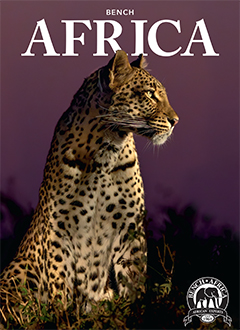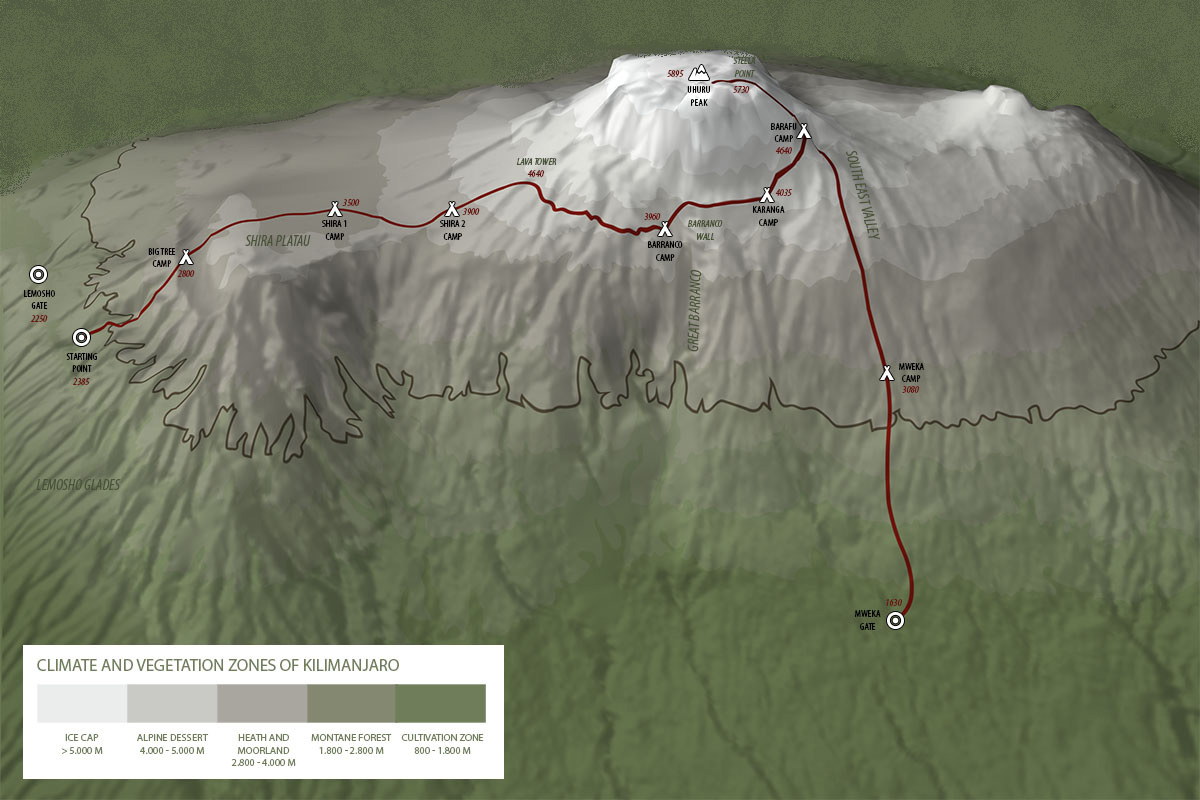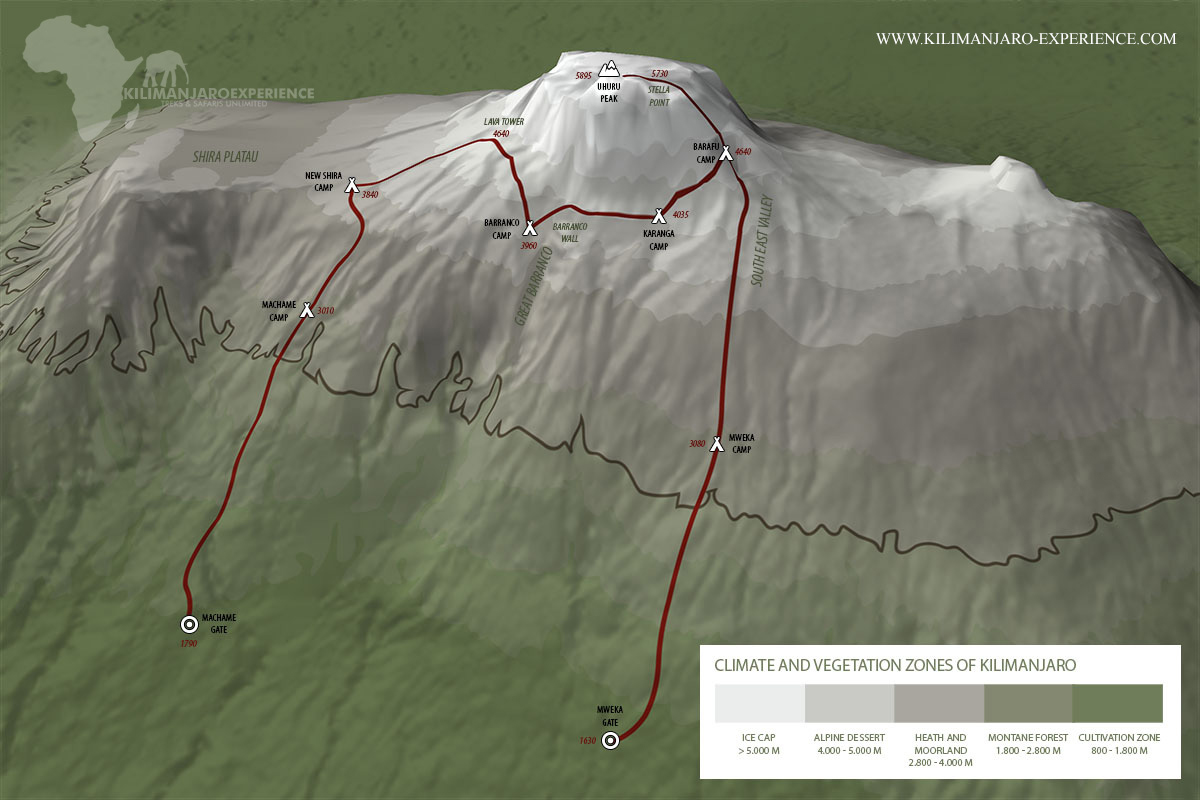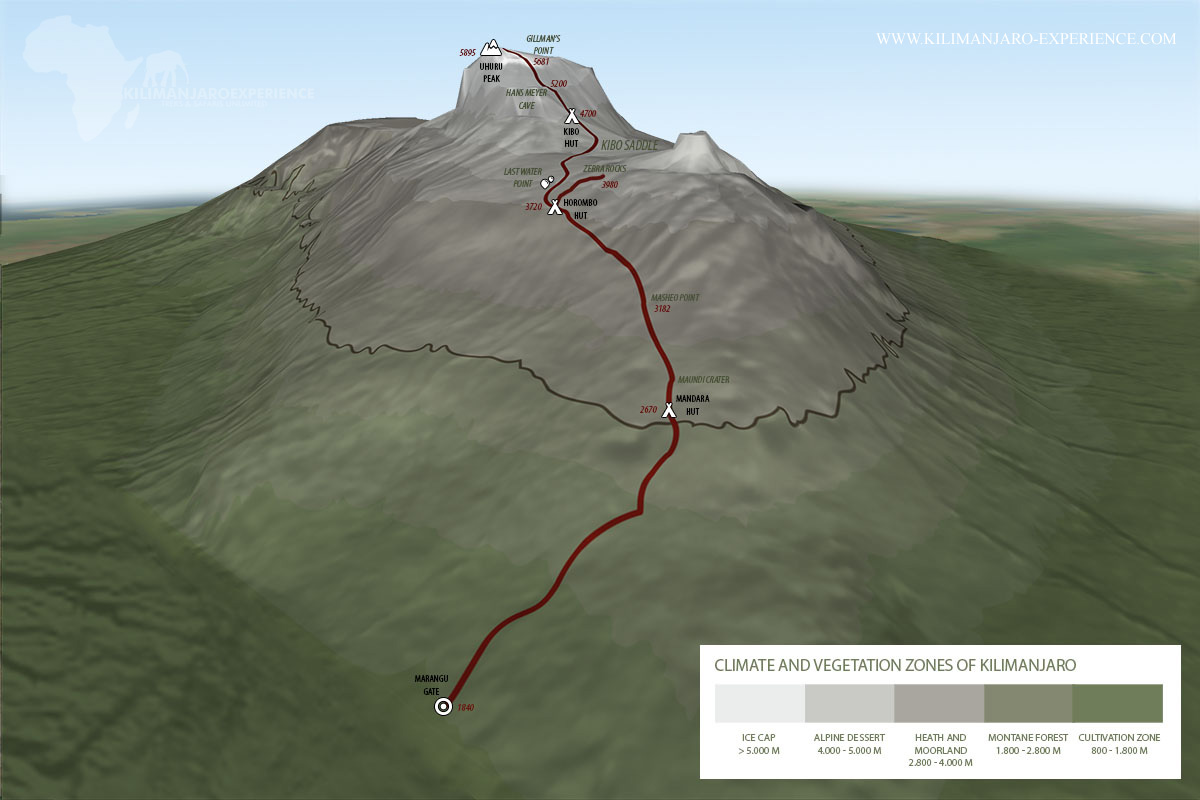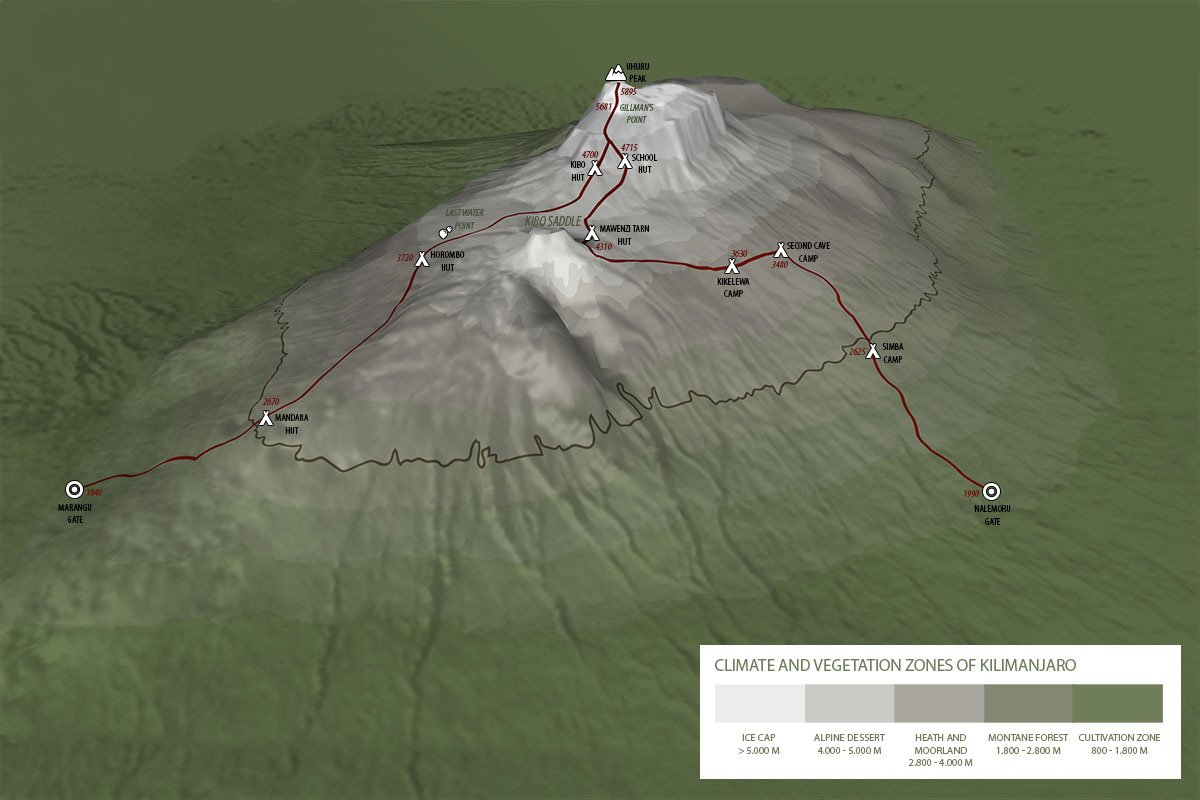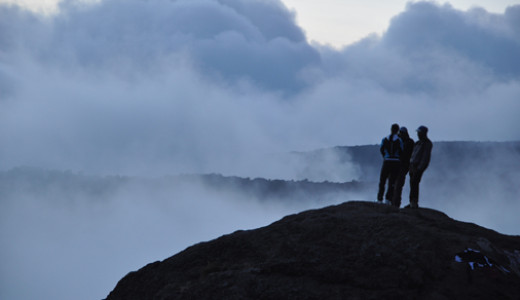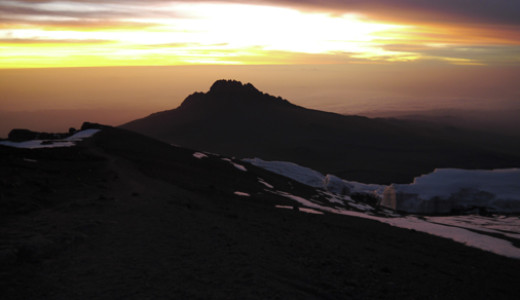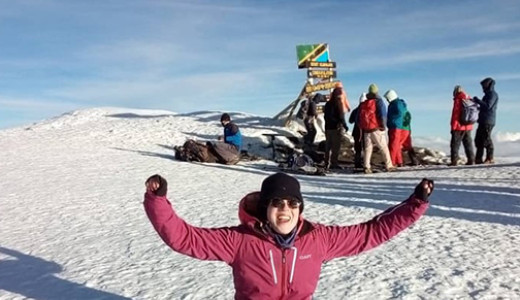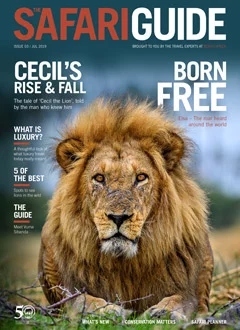Why Should I Choose to Summit Mount Kilimanjaro?
This dormant volcano has been attracting climbers from across the globe for over 120 years.
Often referred to as "The Roof of Africa" and standing at 5895m high, the majestic Mount Kilimanjaro is the highest mountain in Africa, one of the world’s “Great 7” summits and it is also the highest free-standing mountain in the world.
☑ Your trek is complete with breathtaking vistas, stunning sunsets and the distinct and often other-worldly ecological systems that are boasted by this snow-capped giant.
☑ Kilimanjaro can be summited without technical gear or extreme fitness.
☑ It is relatively cheap to climb Mount Kilimanjaro.
☑ As long as you are armed with willpower, a sense of humour, a healthy body and a little bit of luck there is nothing to stop you from standing on the roof of Africa.
Why Book your Kilimanjaro Trek with Bench Africa?
☑ We have been around for close to 50 years.
☑ We have personally tried and tested our operators, with safety and professionalism at the forefront.
☑ More than 85% of clients successfully reach Kilimanjaro’s summit.
☑ Our operators use only the very best and most durable mountain gear and equipment.
☑ The porters and guides are paid and treated fairly.
☑ The chefs are regularly retrained, and are the best on the mountain.
☑ We always put you first, whatever your needs.
It is important to be well prepared for climbing Mount Kilimanjaro. In order to be so, we have compiled the most important travel and climbing information for you mentioned below. If you have further or more specialised questions, please do not hesitate to contact us.
Requirements
Kilimanjaro is a special mountain; it is one of the few mountains of this height that one can climb without previous mountaineering skills and knowledge. This, however, should not lead you into a false sense of security. You still need to be fit and healthy in order to complete the 4 to 6 hour hikes each day. Sure footedness in damp and slippery conditions is essential, especially if you choose a route other than the Marangu Route. Tolerance, fellowship and a good measure of flexibility will go a long way and is a good basis for a successful holiday.
Are there any Age Restrictions?
The national park authority (KINAPA) has set a minimum age of 10 years to climb the Kilimanjaro. We advocate a minimum of 14-16 years on the basis that children are more susceptible to altitude sickness. There is no maximum age restriction. Nevertheless, we do recommend people of a more mature standing to visit their general practitioner for a medical check up beforehand.
When is the Best Time to Climb Mount Kilimanjaro?
It is possible to climb Kilimanjaro at any time of the year. However, during the months between mid March to mid June as well as November, it is not recommended to climb the Kilimanjaro as these months are considered the rain season. The months of December until the end of February are the warmest months and rainfall is at its minimum. A good period is between the end of June until middle of October when the temperatures are a little cooler and the rainfall light.
Which of the Kilimanjaro Routes is Best for Me?
The Lemosho Route begins on the lesser used western side of the Kilimanjaro and from the third stage onward, it runs parallel to the Machame Route. This camping route covers the most distance and one should allow a minimum of seven days for its completion.
The Machame Route is the most picturesque and gives spectacular views of the summit; nevertheless, this route is weather permitting. The route follows the windward side where the rainfall is heavier and the vegetation more dense. The route is steeper than either the Marangu or the Rongai Routes and physically more demanding. Added to this, you walk predominately facing the wind. These characteristics gave the Machame Route also the name of the ‘whiskey route’. The descent follows the Mweka Route.
The Marangu Route is known as the Coca-Cola Route as it has good paths and the least steep tracks. In contrast to the other routes, you stay overnight in mountain huts as opposed to sleeping in tents. Therefore, it gives the greatest chance of reaching the summit. Following this route, you go up and down the same route and you will meet other groups travelling in the opposite direction.
The Rongai Route begins on the Kenyan side of the mountain and runs on the dry northeast side of the Kilimanjaro. The forest is quite narrow and allows for good views towards Kenya and the Kibo summit. On this route, you camp overnight in tents and return via the Marangu Route.
Your choice of the different routes should not be dependent upon the views of the Kilimanjaro and its surrounding area. Bear in mind that it can be chilly while camping at an altitude of 4,000m and it is definitely not for everyone.
The Summit Attempt
For most routes the final summit bid is a little different. Here are the key stages and what to expect:
At the evening briefing your head guide will go over the day’s events and also how the summit section will be tackled. Your guides will have assessed your performance over the previous days and if necessary, may want to start some members of your group slightly earlier – this is especially relevant in large groups. The starting time for all routes will always be at night. Hence, you may start as early as 23H00 or possibly as late as 01H00 but your guide will decide this. The target is to try to reach the summit by sunrise as you have a long downhill afterwards as well.
Getting to the rim: (usually takes approx. six hours) it can sometimes be shorter or even significantly longer. This is one place where different abilities can often show, but not to worry. If the group needs to split up then the time to do so will be determined by the head guide and guides will be assigned to each group. This is the hardest part of your entire trek. It is often mental stamina that counts for a huge amount here, and motivating your colleagues is essential. Your guides will also be motivating you and checking you every so often. Follow the methodical steps of your guide to maximise grip and maintain a slow steady momentum.
Rim To The Summit
On the ascents via Stella point it is still a further hour or so to the summit (Uhuru peak). Some people are happy to turn back here, after all you are at the top of Kilimanjaro, but most likely you will persevere to the summit. From Gilman’s it is around 2 hours to Uhuru peak.
Will the Altitude Affect Me?
Almost all hikers climbing the Kilimanjaro will notice the altitude and the thinner air. Therefore, all hikers should be prepared for the altitude sickness. The primary symptoms are headache, which is often combined with fatigue, loss of appetite and nausea.
Everyone reacts differently to an increase in altitude and a change in air pressure. Fitness fanatics are just as likely to succumb as couch potatoes. In the majority of cases, the symptoms are mild and it is possible to continue the hike. Occasionally, the symptoms are more severe and a return to a lower elevation is required. In most cases, the symptoms disappear quite rapidly. Please remember that in certain circumstances altitude sickness can be life threatening and ignoring the symptoms can and may cause death.
We do not recommend the use of drugs in suppressing the symptoms of altitude sickness. To prevent harming oneself, time to acclimatise (an extra day) and the “pole pole” method (Swahili for slowly slowly) are the preferred recommendations. One should also drink more water to replace the fluids lost from the physical activity and breathing heavier in the thinner and drier air. Three to four litres a day is recommended and supplementary mineral tablets (magnesium) help to replace lost minerals and prevent muscle cramps.
Language
The official national language in Tanzania is Swahili (also Kisuaheli). English is widely spoken and is also spoken by all the guides on Kilimanjaro.
Porters and Guides
Since 1993, a guide is required to climb the Kilimanjaro. However, the qualification and training does not match the European standards. Larger groups will also be accompanied by a so-called assistant guide. These assistant guides are also required to accompany the smaller groups if the large group wants to beak up.
Before the climb, the guide will arrange the transport of the equipment as well as the number of porters required accordingly. For the most parts of the climb, the porters ascend the mountain separately and will usually have the camp prepared before the group arrives. The cook prepares the meals and with large groups, a waiter will help the cook.
For a group of six people, the mountain crew can easily consist of 24 people.
By European ideas, it is usual to travel with your own baggage. However, there is a lot of material needed to climb the Kilimanjaro and soon you will realise the reason behind the large groups and the need of porters. Please also consider the situation of the indigenous people and how hard it is to profit directly from tourism. These jobs, whether as a guide or a cook, are much loved and favoured.
Tips and Mountain Crew
After the climb, it is customary to give tips to all the members of the mountaineering crew. Below are guidelines based upon a group (not per person):
Guide: 15-18 USD / day
Assistant Guide: 12-15 USD / day
Cook: 8-10 USD / day
Waiter: 7-9 USD / day
Summit Porter: 8-12 USD / day
Porter: 6-7 USD / day
Tent Crew: 8-7 USD / day
Tips make up a large proportion of the income of the mountaineering crew. If you are happy with the work that they have done, naturally you can give a little more. Below, you can find an outline of a possible way for giving the tips. Ask your guide for a list consisting of all the names of the team that also indicates the number of guides, porters, assistants etc. Amongst yourselves, decide how much they should receive and collect the total amount. During the leaving ceremony, read out aloud what each member of the team receives. This way, everyone knows his or her dues and no arguments can arise. You can give the entire amount to the chief guide who will then divide the monies accordingly.
This method has been proven reliable and saves you and other team member’s long debates with the guides or porters as to how much each should receive. Used items or equipment is also gratefully received. Example for calculating tips (calculated with the maximum tipping amount):
| Lemosho Route 7 days / 6 nights | |||||
| Climbers | 2 | 4 | 6 | 8 | |
| Guide (18 USD) |
1 | 2 | 2 | 3 | |
| Assist. Guide
(15 USD) |
1 | - | 1 | 1 | |
| Cook (10 USD) |
1 | 1 | 1 | 1 | |
| Waiter (9 USD) |
1 | 1 | 1 | 2 | |
| Summit porter (12 USD) |
- | 1 | 2 | 2 | |
| Porter (7 USD) |
7 | 11 | 15 | 19 | |
| Tent Crew (7 USD) |
1 | 1 | 2 | 2 | |
| Tips TOTAL |
756 USD | 1057 USD | 1491 USD | 1876 USD | |
| Tips PER PERSON | 378 USD | 264 USD | 249 USD | 235 USD | |
| Machame Route 6 days / 5 nights | |||||
| Climbers | 2 | 4 | 6 | 8 | |
| Guide (18 USD) |
1 | 2 | 2 | 3 | |
| Assistant Guide
(15 USD) |
1 | - | 1 | 1 | |
| Cook (10 USD) |
1 | 1 | 1 | 1 | |
| Waiter (9 USD) |
1 | 1 | 1 | 2 | |
| Summit Porter (12 USD) |
- | 1 | 2 | 2 | |
| Porter (7 USD) |
6 | 10 | 14 | 18 | |
| Tent Crew (7 USD) |
1 | 1 | 2 | 2 | |
| Tips TOTAL |
606 USD | 862 USD | 1236 USD | 1566 USD | |
| Tips PER PERSON |
303 USD | 216 USD | 206 USD | 196 USD | |
| Marangu Route 6 days / 5 nights | |||||
| Climbers | 2 | 4 | 6 | 8 | |
| Guide (18 USD) |
1 | 2 | 2 | 3 | |
| Assistant Guide
(15 USD) |
1 | - | 1 | 1 | |
| Cook (10 USD) |
1 | 1 | 1 | 1 | |
| Waiter (9 USD) |
1 | 1 | 1 | 2 | |
| Summit Porter (12 USD) |
- | 1 | 2 | 2 | |
| Porter (7 USD) |
5 | 9 | 13 | 15 | |
| Tips TOTAL |
522 USD | 780 USD | 1110 USD | 1365 USD | |
| Tips PER PERSON |
261 USD | 195 USD | 185 USD | 170 USD | |
| Rongai Route 6 days / 5 nights | |||||
| Climbers | 2 | 4 | 6 | 8 | |
| Guide (18 USD) |
1 | 2 | 2 | 3 | |
| Assistant Guide
(15 USD) |
1 | - | 1 | 1 | |
| Cook (10 USD) |
1 | 1 | 1 | 1 | |
| Waiter (9 USD) |
1 | 1 | 1 | 2 | |
| Summit Porter (12 USD) |
- | 1 | 2 | 2 | |
| Porter (7 USD) |
6 | 10 | 14 | 18 | |
| Tent Crew (7 USD) |
1 | 1 | 2 | 2 | |
| Tips TOTAL |
606 USD | 862 USD | 1236 USD | 1566 USD | |
| Tips PER PERSON |
303 USD | 216 USD | 206 USD | 196 USD | |
The exact number of crew members is dependent in various factors (i.e. weight of luggage and food) and can vary.
Where will We Sleep?
Overnight accommodation on a camping tour will be in 2 man tents in which sleeping mats are provided. Single travellers may be asked to share a tent with a member of the same sex. Dinner will be taken in a larger tent with tables and chairs.
Along the Marangu Route are mountain huts similar in style to Scandinavian wooden huts. Halfway up the mountain is the largest hut with common and dinning rooms. This large hut is surrounded by smaller huts that house four to six people. The highest hut is the Kibo Hut and is made out of stone. None of the huts are heated but do have mattresses and electric lights. The huts at Mandara and Horombo also have running water.
What will we Eat?
Wherever possible, fresh water will be taken out of springs or wells and boiled before drinking. Higher up the mountain, the area gets drier and the water will be carried in canisters, which will also be boiled before use. All meals are freshly prepared on the mountain by your cook. You will be amazed what delicious meals can be prepared under such primitive conditions. A typical daily menu is a follows:
Breakfast:
Fresh fruit, scrambled eggs or omelette, toast, margarine, peanut butter, jam, porridge, milk, hot chocolate, coffee (powder), tea.
Lunch:
Fresh fruit or vegetables, sandwiches, boiled eggs, chicken, milk, hot chocolate, coffee, tea.
Dinner:
Soup, bread, main dish with red meat or poultry, served with either chips, mashed potatoes, pasta, rice or vegetables. Dessert: fresh fruit. Milk, hot chocolate, coffee or tea.
For vegetarians and those with food allergies, advanced notification should be given so that we can cater to your needs.
Money Matters
The local currency is the Tanzanian Shilling. It is illegal to import or export the Tanzanian Shilling, but visitors can bring any amount of foreign currency with them.
The US Dollar can be seen as a second currency in which practically all tourists are trading in dollars. However, more and more people are accepting the Euro. Not all hotels except credit cards.
There are cash points for example in Moshi and Arusha where you can withdraw local currency with your Visa Card. At the Barclay’s Bank in Arusha, you can use an EC-Card; Traveller’s cheques are generally no longer accepted, as the fees are too dear. It is also recommended that you bring a credit card in case of an emergency.
Mobile Phones
There is generally good reception and coverage, both on Mount Kilimanjaro and in Tanzania. Speak to your provider for more details.
Electrical Power Supply
The camps have no electricity. Solar cells are solely for the park rangers’ radio equipment and the mountain hut lights. When needed, you will have to supply your own electricity from batteries. In the higher and colder regions, the batteries drain quicker and do not last so long. The power supply is rated at 230 volt and 50 Hz. In Tanzania, the British 3 prong plug (type G) is used. Adapters can be bought in all good electrical stores. The electricity supply in East Africa is also susceptible to power surges and power cuts, please be aware that this may damage sensitive equipment such as Notebooks.
Photography
Your camera will be used in severe cold and should be protected against freezing whilst not in use. A suitable pouch for the camera, to ensure that it does not freeze on the final ascent is a good idea, although keeping your equipment in interior pockets of your clothing should be sufficient.
In an Emergency
As with all activities on Kilimanjaro, one must bear in mind that there are no mountain rescue services like the ones that you would find, for example, in the European Alps. If you can no longer walk or descend the mountain under your own power, you will be either carried or brought down by a stretcher. Helicopters are not available. To save yourself from such an experience, proceed with caution and do not over exert yourself.
Travel Documents and Visas
For entry into Tanzania, you need a passport that is valid for at least six months after your intended leaving date. A visa can be obtained upon arrival at the international airport or border control. For entering Tanzania from yellow fever endemic countries (i.e. neighbouring countries Kenya and Uganda), you need to show proof of vaccination against yellow fever and you must have the appropriate papers/documents. However, we do advise that you have the vaccinations recommended by your country of residence.
Important Rules
You must also have a valid return ticket in your possession that allows you to leave the country once your safari, tour or holiday is finished. If you do not have this valid ticket, you must show that you have the ability to pay for a ticket out of the country, such as a credit card.
Various Taxes
Many airports in East Africa have a departure tax; this tax is usually paid on site, in cash and in US dollars. In addition, there are often short notice changes to East Africa’s tax law (e.g. introduction of infrastructure tax) which is why we highly recommend that you set aside approx. 50 USD per person in small bills for such often unforeseen expenses.
Souvenirs
Please always pay attention to the import regulations of your respective home country when buying souvenirs or other goods abroad. Furthermore, please take note that potentially high fees can be charged at the airport for exporting e.g. wood carvings!
Insurance
Please make sure that you are covered by your health insurance when you are away from home and travelling. If this is not the case, we cannot stress enough the importance of having the appropriate travel insurance. Please make sure that you are covered for all medical expenses including the possibility of return transport costs to your country of residence. Other insurance such as for luggage theft or loss should also be taken into consideration as well as an insurance for travel cancellation.
Equipment and Clothing
Without the correct equipment a mountain tour can quickly become an ordeal, this is especially true on Kilimanjaro. At the park entrance, the weather is tropical and at the summit it is a chilly -10°C and below. The onion system is the way to go, by wearing many layers you can add or remove items depending upon personal preference and is ideal for the changing climatic conditions.
A warm sleeping bag is essential, especially on camping tours. If you are thinking about using the one that you had as a child on summer camp, please think again. You will be sleeping in temperatures in the region of -12°C and you will need a sleeping bag that will keep you warm in such conditions.
For yourself, you will only need a day pack; your porter will carry any further luggage. All your equipment must go in a travel bag, trekking rucksack or a kit bag and not exceed 12 kg (27lbs). The porters cannot carry suitcases and cases with roll systems. We recommend packing the items in plastic bags to protect them from the damp and rain. Please also check the baggage terms of your respective airline.
Due to a new regulation from KINAPA (Kilimanjaro National Park Authority), thin walled plastic water bottles have been banned on Kilimanjaro. Therefore, clients have to bring their own water bottles. We would also like to advise clients wanting to make use of a drinking system (camel bag or similar) to bring separate water containers for the summit night as the tubes of these drinking systems tend to freeze during the night of the summit. We recommend water bottles with a capacity of minimum 3 litres (i.e. 2 x 1.5 litre bottles). Please take note that the bottles can only be filled in the mornings and evenings!
Clients not wanting to bring bottles along, are able to purchase 1 litre metal containers for 15 USD a piece on site (pre-booking recommended)
Suggested Clothing List And Useful Items For The Trek
Remember that you will be on the mountain for at least 5-6 days. You need to take enough clothing, especially socks to last this period. Due to frequent rainfalls as well as numerous streams on the routes, it is advisable to pack items individually in your bag. These items should be wrapped in plastic to prevent them from getting wet in case of the rain.
You will require thermal hiking socks, gloves, warm head protection, raincoat, sunglasses, and sun protection cream. Do not forget your hiking boots/running shoes, and very importantly a walking stick pole. One of the most essential items of clothing is an outer jacket, it should be able to keep you warm, protect you at temperatures as low as minus 25 degrees and to keep the wind out.
Try to avoid tight fitting clothes as this will hamper circulation. Due to low altitude and physical exertion, cold is a very serious obstacle when attempting to climb Kilimanjaro.
What to take
- Quality 3/4 season sleeping bag
- Walking boots plus training shoes for around camp (it is advised that your walking boots are broken in before undertaking any sort of trek)
- A walking stick/pole (this can be hired)
- Head torch and spare batteries – important for your summit climb
- A pair of warm trousers
- Light cotton trousers and shorts
- Summer shirts; long sleeves are necessary as well as short sleeves, in case you get sunburnt and have to cover up your arms
- A fleece and Gore-Tex jacket
- Skiing underwear or thermal ‘long johns’ and top
- A good waterproof anorak
- Gloves and scarf
- Plenty of socks, cotton, thick and thin
- Sunhat and beanie (warm hat)
- Sun goggles or glasses
- Lip sun cream
- A good high factor sun block for protection against the sun
- Camera and plenty of film
- Binoculars
- A good quality torch and batteries
- Basic first aid kit (plasters; lint; cotton wool; elastic bandage; antiseptic liquid or cream; blister kit; throat lozenges)
- Personal medicines, clearly labelled
- Gel activated hand warmers
- High energy bars
- Salt tablets
- Plastic bags
- A towel and wash bag
- Toilet paper
- Large water bottle, for drinking on the
- trek (two x 2 litres)
- Large rucksacks are not necessary but a small shoulder bag or backpack for carrying your camera, water bottle etc, is essential
What to pack in your day pack
- Waterproofs
- Camera/video
- Water bottles (bottled water can be provided at the trail head, but if you want to you can always fill up at the lodge)
- Poncho/umbrella (dependant on season)
- Hat
- Sunglasses
- Extra snacks if you have them
- First aid kit
NOTE: on all days try to keep your day sack as light as possible. Your porters have been hired to carry most of your gear and carrying extra gear will only make you more tired and stress your body out more, making it harder for your body to deal with the altitude.
We hope that the detailed explanation and information given above answers all of your questions. If not, then as always please do not hesitate to contact us.







